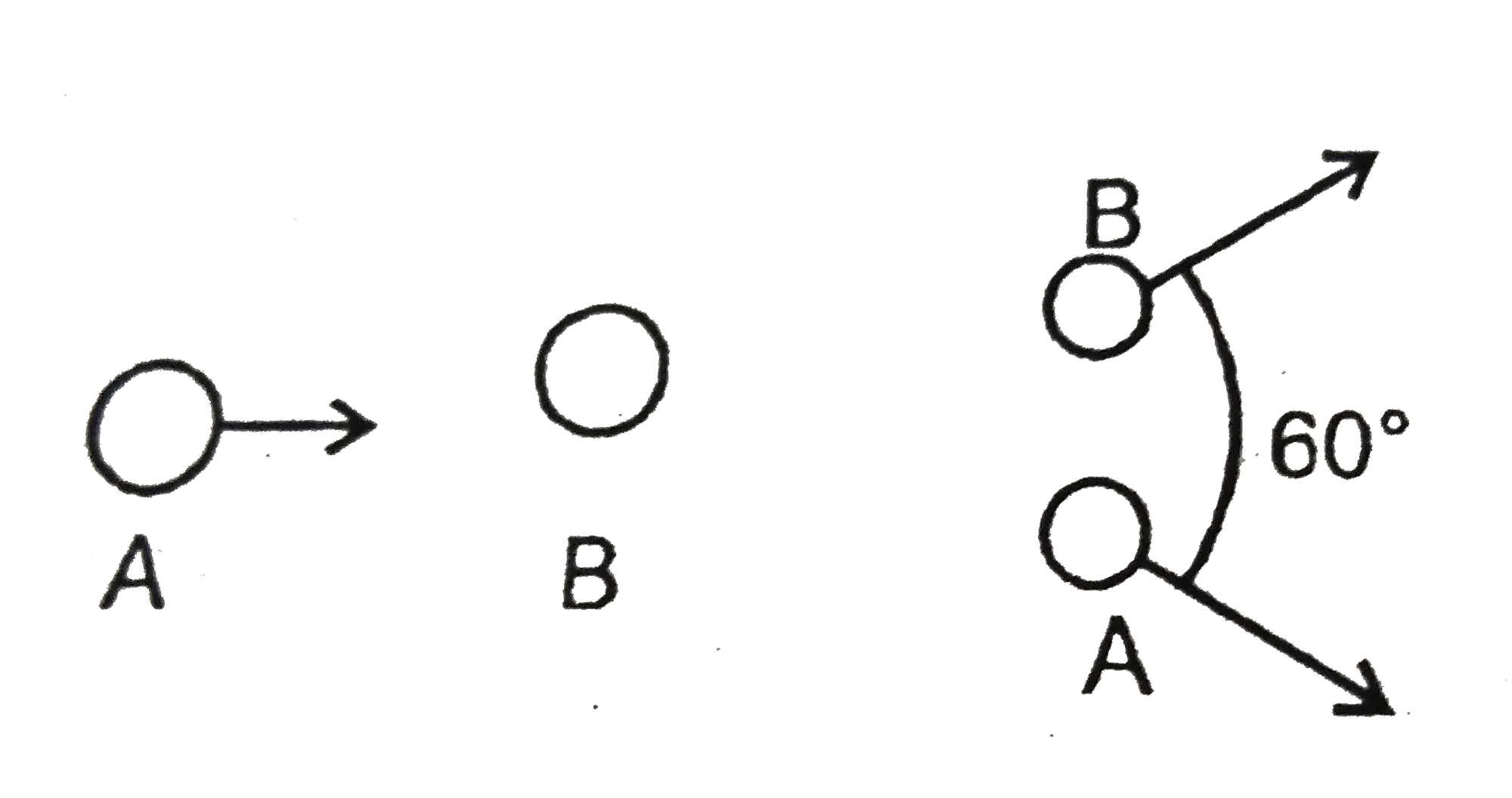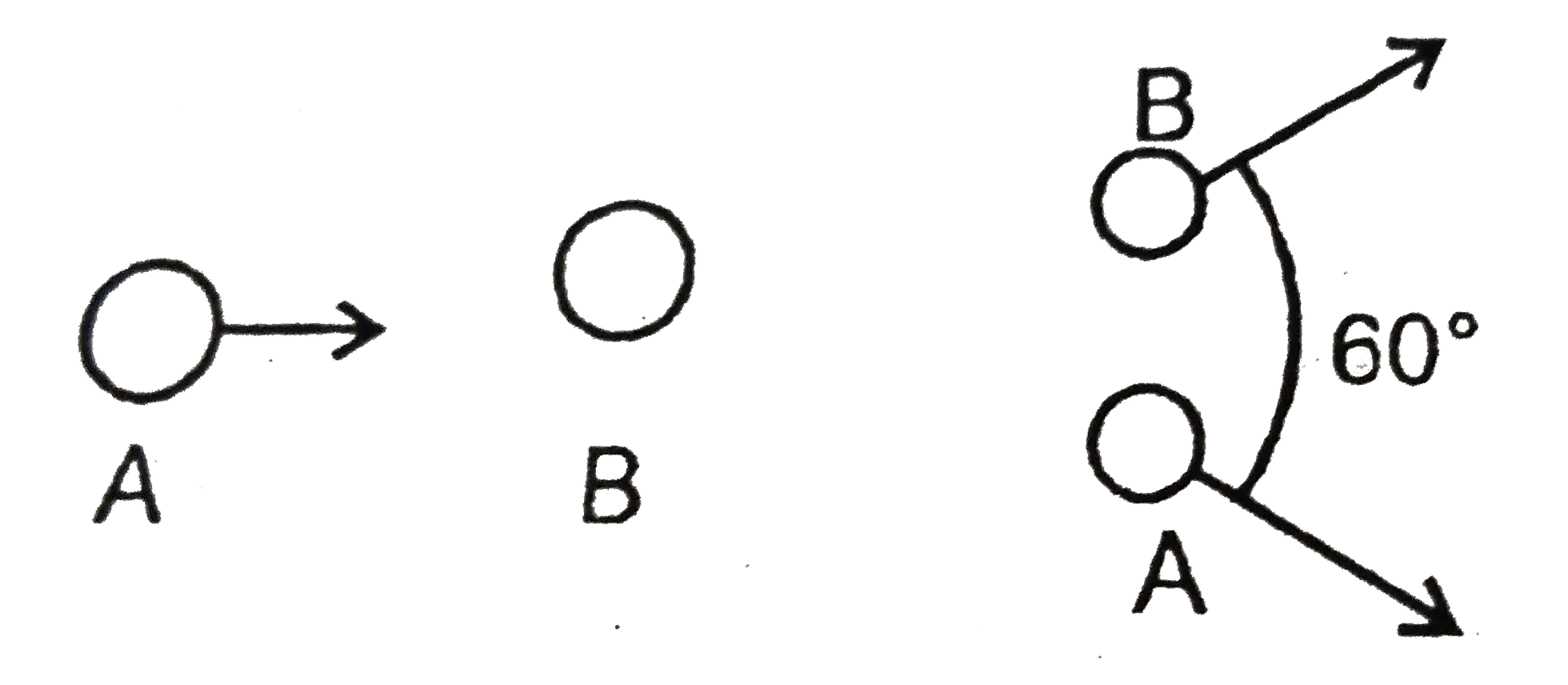If no external force acts on a system
To solve the question "If no external force acts on a system," we can follow these steps:
1. Understanding the System:
- We start by considering a system of particles. A system can be made up of multiple masses that interact with each other but are not influenced by any external forces.
2. Applying Newton's First Law:
- According to Newton's First Law of Motion, if no external force acts on an object (or a system of objects), the object will maintain its state of rest or uniform motion. This means that the acceleration of the system is zero.
3. Acceleration of the Center of Mass:
- The center of mass (COM) of the system is a point that represents the average position of all the mass in the system. If no external force acts on the system, the acceleration of the center of mass is given by:
acm=0
4. Velocity of the Center of Mass:
- Since the acceleration of the center of mass is zero, it follows that the velocity of the center of mass remains constant. Therefore, we can express this as:
vcm=constant
5. Linear Momentum of the System:
- Linear momentum (p) of the system is defined as the product of the total mass (M) of the system and the velocity of the center of mass (v_{cm}):
p=M⋅vcm
- Since vcm is constant, the linear momentum of the system is also constant. Thus, we can conclude:
p=constant
6. Conclusion:
- In summary, if no external force acts on a system, the acceleration of the center of mass is zero, the velocity of the center of mass is constant, and consequently, the linear momentum of the system remains constant.
- We start by considering a system of particles. A system can be made up of multiple masses that interact with each other but are not influenced by any external forces.
- According to Newton's First Law of Motion, if no external force acts on an object (or a system of objects), the object will maintain its state of rest or uniform motion. This means that the acceleration of the system is zero.
- The center of mass (COM) of the system is a point that represents the average position of all the mass in the system. If no external force acts on the system, the acceleration of the center of mass is given by:
acm=0
- Since the acceleration of the center of mass is zero, it follows that the velocity of the center of mass remains constant. Therefore, we can express this as:
vcm=constant
- Linear momentum (p) of the system is defined as the product of the total mass (M) of the system and the velocity of the center of mass (v_{cm}):
p=M⋅vcm
- Since vcm is constant, the linear momentum of the system is also constant. Thus, we can conclude:
p=constant
- In summary, if no external force acts on a system, the acceleration of the center of mass is zero, the velocity of the center of mass is constant, and consequently, the linear momentum of the system remains constant.
Topper's Solved these Questions
- SYSTEM OF PARTICLES AND ROTATIONAL MOTIONBOOK - AAKASH INSTITUTE ENGLISHCHAPTER - SYSTEM OF PARTICLES AND ROTATIONAL MOTIONEXERCISE - Illustration
4 Videos
- SYSTEM OF PARTICLES AND ROTATIONAL MOTIONBOOK - AAKASH INSTITUTE ENGLISHCHAPTER - SYSTEM OF PARTICLES AND ROTATIONAL MOTIONEXERCISE - Assignment (Section - A) Objective Type Questions (One option is correct)
62 Videos
- SEMICONDUCTOR ELECTRONICS: MATERIALS, DEVICES AND SIMPLE CIRCUITSBOOK - AAKASH INSTITUTE ENGLISHCHAPTER - SEMICONDUCTOR ELECTRONICS: MATERIALS, DEVICES AND SIMPLE CIRCUITSEXERCISE - Assignment (Section-D (Assertion and reason))
5 Videos
- TEST 1BOOK - AAKASH INSTITUTE ENGLISHCHAPTER - TEST 1EXERCISE - EXERCISE
21 Videos
Similar Questions
Statement I: No external force acts on a system of two spheres which undergo a perfectly elastic head-on collision. The minimum kinetic energy of this system is zero if the net momentum of the system is zero.
Statement II: If any two bodies undergo a perfectly elastic head-on collision, at the instant of maximum deformation. the complete kinetic energy of the system is converted to' deformation potential energy of the system.
View SolutionSelect the correct alternative. When there is no external force acting on a system of particles,
View SolutionA nonzero external force acts on a system of particles. The velocity and the acceleration of the centre of mass are found to bev0anda0 at an instant t. It is possible that:
View SolutionA smooth ball 'A' moving with velocity 'V' collides with another smooth identical ball at rest. After collision both the balls move with same speed with angle between their velocities 60∘. No external force acts on the system of balls.

If the kinetic energy lost is fully converted to heat then heat produced is
View SolutionA smooth ball 'A' moving with velocity 'V' collides with another smooth identical ball at rest. After collision both the balls move with same speed with angle between their velocities 60∘. No external force acts on the system of balls.

The value of coefficient of resititution is
View SolutionA smooth ball 'A' moving with velocity 'V' collides with another smooth identical ball at rest. After collision both the balls move with same speed with angle between their velocities 60∘. No external force acts on the system of balls.

The speed of each ball after the collision is
View SolutionStatement I: If a sphere of mass mmoving with speed u undergoes a perfectly elastic head-on collision with another sphere of heavier mass M at rest (M>m), then direction of velocity of sphere of mass m is reversed due to collision (no external force acts on system of two spheres).
Statement II: During a collision of spheres of unequal masses, the heavier mass exerts more force on the lighter mass in comparison to the force which lighter mass exerts on the heavier one,
View SolutionIf the external forces acting on a system have zero resultant, the centre of mass
View SolutionIf the resultant of all the external forces acting on a system of particles is zero. Then from an inertial frame, one can surely say that
View SolutionTwo small spheres of equal mass, and heading towards each other with equal speeds, undergo a head on collision ( external force acts on system of two spheres ). Then which of the following statement is correct ?
View Solution
